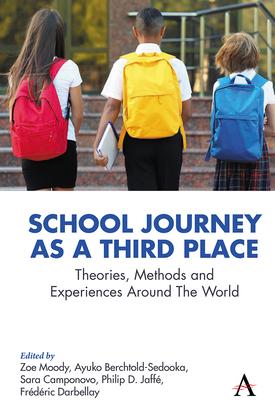Journeys to school are important time and space transitions between homes and schools for children worldwide. This book comprises various chapters providing insights into children’s experiences of this essential aspect of their lives and schooling experience. From an interdisciplinary and intercultural perspective, leading international scholars focus on how children from very different contexts travel between their homes and their schools and how this transitional space impacts their daily lives and interactions with their environment. An overview of different school journeys is covered, laying out the contours of a child-friendly and context-responsive transition to and from school.
The way to and from school becomes a third place for some children who develop meaningful social and environmental relationships, mix up with children who belong to different groups, learn, relax, and so on. As genuine social actors, children invest one of the last spaces of freedom they are given to apprehend their environment. What is specific to this almost universal experience, and what varies depending on various individuals or contexts? How do children themselves act, impact and appreciate the journey to and from school? Various studies from a wide range of disciplines and using different methods have highlighted benefits and risks related to children’s journey to school, providing insightful data regarding modes of transportation, health and wellbeing issues, school organisation and legislation, safety or urban development and so on. Research has also shown how this journey can support positive links between the child and his or her social and natural environment. Realities, however, vary immensely depending on the context. Some children accompanied to school by adults barely have the opportunity to interact with their environment or benefit from some welcome physical activity after sitting for several hours in class. Conversely, others walk long distances or even face relatively serious hazards during their journey.| FindBook |
有 1 項符合
School Journey as a Third Place: Interdisciplinarity, Threshold and Transitions Theories, Methods and Experiences Around the World的圖書 |
 |
School Journey as a Third Place: Interdisciplinarity, Threshold and Transitions Theories, Methods and Experiences Around the World 出版社:Anthem Press 出版日期:2023-03-07 語言:英文 規格:精裝 / 250頁 / 普通級/ 初版 |
| 圖書館借閱 |
| 國家圖書館 | 全國圖書書目資訊網 | 國立公共資訊圖書館 | 電子書服務平台 | MetaCat 跨館整合查詢 |
| 臺北市立圖書館 | 新北市立圖書館 | 基隆市公共圖書館 | 桃園市立圖書館 | 新竹縣公共圖書館 |
| 苗栗縣立圖書館 | 臺中市立圖書館 | 彰化縣公共圖書館 | 南投縣文化局 | 雲林縣公共圖書館 |
| 嘉義縣圖書館 | 臺南市立圖書館 | 高雄市立圖書館 | 屏東縣公共圖書館 | 宜蘭縣公共圖書館 |
| 花蓮縣文化局 | 臺東縣文化處 |
|
|
圖書介紹 - 資料來源:博客來 評分:
圖書名稱:School Journey as a Third Place: Interdisciplinarity, Threshold and Transitions Theories, Methods and Experiences Around the World
內容簡介
作者簡介
Zoe Moody is Professor at the University of Teacher Education Valais and Senior Research Associate at Centre for Children’s Rights Studies, University of Geneva.
Ayuko Berchtold-Sedooka, PhD, is Senior Research Associate at the University of Geneva and Expert in educational resource production, at éducation21.
Sara Camponovo is PhD in educational science at the University of Geneva.
Philip D. Jaffé is Professor at the Center for Children’s Rights Studies, University of Geneva and a member of the UN Committee on the Rights of the Child.
Frédéric Darbellay is Associate Professor at the University of Geneva and Head of the Inter- and Transdisciplinary Unit at the Centre for Children’s Rights Studies.
|






![塔木德:猶太人的致富聖經[修訂版]:1000多年來帶領猶太人快速累積財富的神祕經典 塔木德:猶太人的致富聖經[修訂版]:1000多年來帶領猶太人快速累積財富的神祕經典](https://media.taaze.tw/showLargeImage.html?sc=11100697818)




